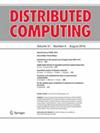APPLICATION OF BLOCKCHAIN BASED WAQF CROWDFUNDING IN FISHERMEN GROUP: CASE STUDY OF NAMBANGAN AND CUMPAT, SURABAYA
IF 2.1
4区 计算机科学
Q3 COMPUTER SCIENCE, THEORY & METHODS
引用次数: 5
Abstract
Background: The image of fishermen so far is a group of people classified as poor. One effort to reduce poverty is to revive the microenterprise economy through cooperatives and utilize waqf funds as an alternative source of financing for microbusinesses. The Mining and Cumpat Fishermen Group of Kenjeran District in Surabaya City has now received capital injections from productive endowments in their cooperatives. However, another problem arises from productive waqf there, the waqf that is collected is not as much as what is needed by the person. Purpose: This service program is expected to produce an outcome that is a blockchain based application that can facilitate endowments and willingness. Thus it is expected to help increase the capital of the Fishermen and Cumpat Fishermen Group, Kenjeran District, Surabaya City. Method: This service program used a participatory method whereby the companion was also involved in the application business process. In addition, the companion also asked for active participation from the mauquf alaih to provide detailed information about his business. Thus, the facilitators could promote to the prospective waqf to channel the endowment funds. Results: This assistance program produced a waqf application with blockchain technology that can be accessed on waqf.network. Conclusion: This program was considered effective in growing trust in the distribution of waqf funds. In addition, maukuf alaih also makes it easier to get investors in developing their businesses.基于区块链的WAQF众筹在渔民群体中的应用&以南班甘和苏拉巴亚坎帕特为例
背景:到目前为止,渔民的形象是一群被归类为穷人的人。减贫的一项努力是通过合作社振兴微型企业经济,并利用宗教基金作为微型企业的替代资金来源。泗水市Kenjeran区的Mining and Cumpat Fishermen Group现在已经从其合作社的生产捐赠中获得了资本注入。然而,另一个问题来自于那里的生产性宗教基金,收集的宗教基金没有个人需要的那么多。目的:该服务计划有望产生一个基于区块链的应用程序,可以促进捐赠和意愿。因此,预计这将有助于增加泗水市Kenjeran区渔民和Cumpat渔民集团的资本。方法:该服务程序使用了一种参与式方法,同伴也参与了应用程序的业务流程。此外,该同伴还要求mauquf alaih积极参与,以提供有关其业务的详细信息。因此,主持人可以向未来的宗教基金会宣传捐赠资金的渠道。结果:该援助计划使用区块链技术制作了一个waqf应用程序,可以在waqf.network上访问。结论:该计划被认为在增加对waqf资金分配的信任方面是有效的。此外,maukuf alaih还使投资者更容易发展他们的业务。
本文章由计算机程序翻译,如有差异,请以英文原文为准。
求助全文
约1分钟内获得全文
求助全文
来源期刊

Distributed Computing
工程技术-计算机:理论方法
CiteScore
3.20
自引率
0.00%
发文量
24
审稿时长
>12 weeks
期刊介绍:
The international journal Distributed Computing provides a forum for original and significant contributions to the theory, design, specification and implementation of distributed systems.
Topics covered by the journal include but are not limited to:
design and analysis of distributed algorithms;
multiprocessor and multi-core architectures and algorithms;
synchronization protocols and concurrent programming;
distributed operating systems and middleware;
fault-tolerance, reliability and availability;
architectures and protocols for communication networks and peer-to-peer systems;
security in distributed computing, cryptographic protocols;
mobile, sensor, and ad hoc networks;
internet applications;
concurrency theory;
specification, semantics, verification, and testing of distributed systems.
In general, only original papers will be considered. By virtue of submitting a manuscript to the journal, the authors attest that it has not been published or submitted simultaneously for publication elsewhere. However, papers previously presented in conference proceedings may be submitted in enhanced form. If a paper has appeared previously, in any form, the authors must clearly indicate this and provide an account of the differences between the previously appeared form and the submission.
 求助内容:
求助内容: 应助结果提醒方式:
应助结果提醒方式:


